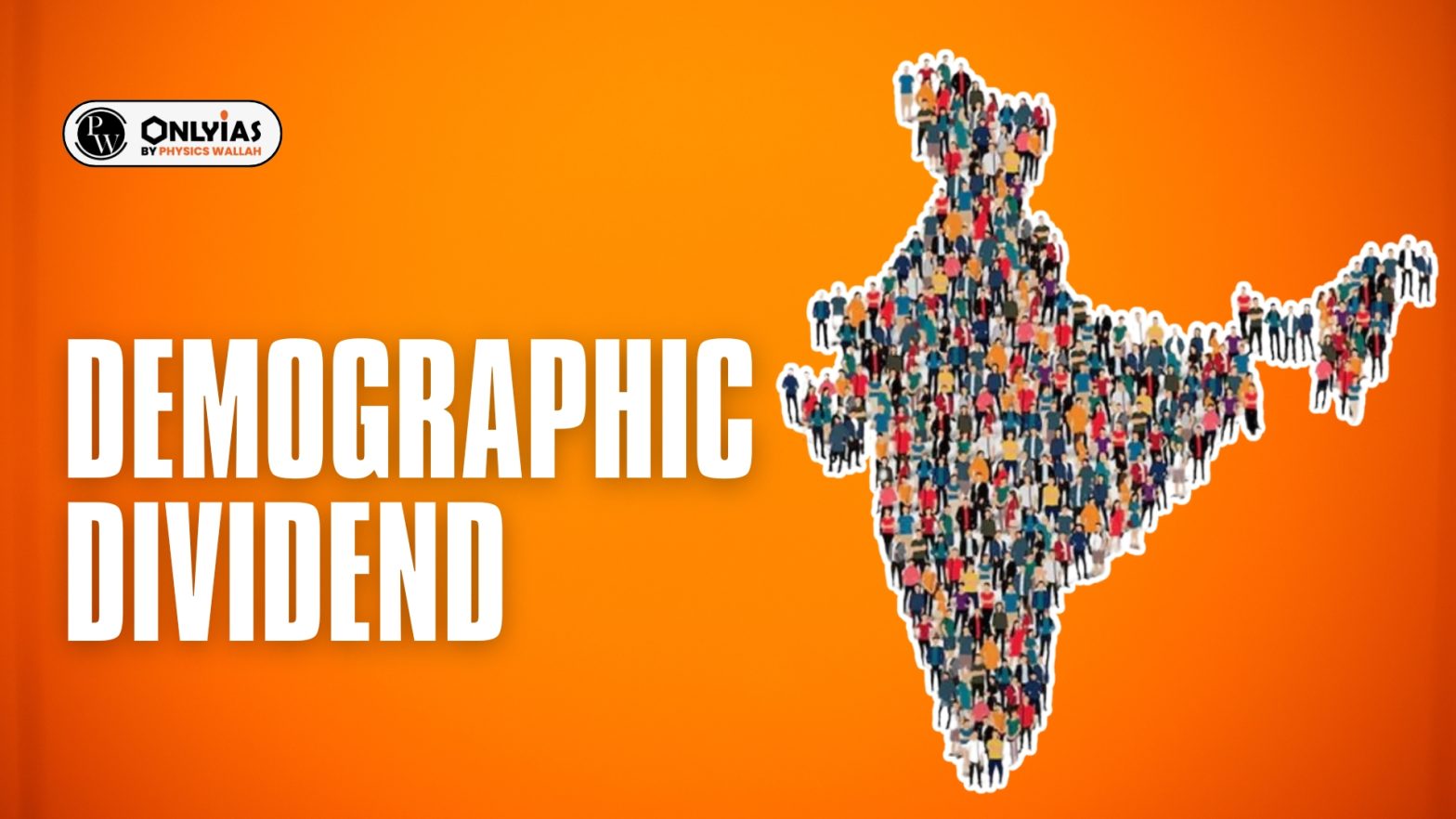Demographic Dividend is the economic growth potential arising from a larger working-age population compared to dependents. Learn more about its meaning, benefits, and challenges.

The demographic dividend is the economic growth that can happen when a country’s age structure changes. This growth occurs when the working-age population (ages 15 to 64) is larger than the non-working-age groups (children and elderly). If managed well, this shift can lead to more productivity and economic growth. Read on to discover more about the demographic dividend, its benefits, and its challenges.
A demographic dividend occurs during the demographic transition—a shift from high birth and death rates to lower birth and death rates. This results in a higher proportion of the population entering the workforce, potentially boosting economic growth through:
India’s demographic dividend is one of its most promising economic assets. The country entered the demographic dividend phase in 2005-06 and is expected to remain within this window until 2055-56. This period represents a golden opportunity for India, with a significant share of its population being in the working-age group (15-64 years).
This youthful population provides immense potential for economic growth, provided the right policies and investments are in place.
India is taking proactive measures to maximize the benefits of its demographic dividend. These efforts span various domains, from education to healthcare, skill development, and infrastructure.
While the demographic dividend offers immense potential, certain challenges threaten to derail its benefits:
India must address systemic challenges and adopt targeted policies to harness its demographic dividend effectively:
Countries like South Korea and China have effectively leveraged their demographic dividends to achieve rapid economic growth. Currently, nations in Sub-Saharan Africa are entering phases where they could potentially benefit from demographic dividends, provided they implement supportive policies.
The demographic dividend offers a unique opportunity for accelerated economic growth. However, realizing its full potential requires strategic investments in education, healthcare, and job creation to ensure the burgeoning workforce is skilled, healthy, and productively employed.
Ready to boost your UPSC 2025 preparation? Join PW’s UPSC online courses today!
UPSC Exam 2025 Related Articles
UPSC Prelims 2025 Exam
UPSC Notification 2025
UPSC Preparation 2025
UPSC Eligibility 2025
UPSC Exam Pattern
UPSC Syllabus
The demographic dividend is the economic growth potential resulting from a shift in a country's age structure, leading to a larger proportion of working-age individuals.
By investing in education, healthcare, and job creation, a country can enhance productivity and economic growth during its demographic dividend phase.
India faces challenges such as generating sufficient employment opportunities, enhancing skill development, providing adequate healthcare, and addressing regional disparities.
South Korea is an example of a country that has effectively harnessed its demographic dividend through strategic investments in education and industrialization.
India's demographic dividend is projected to peak around 2041, with the working-age population reaching approximately 59%.

<div class="new-fform">
</div>